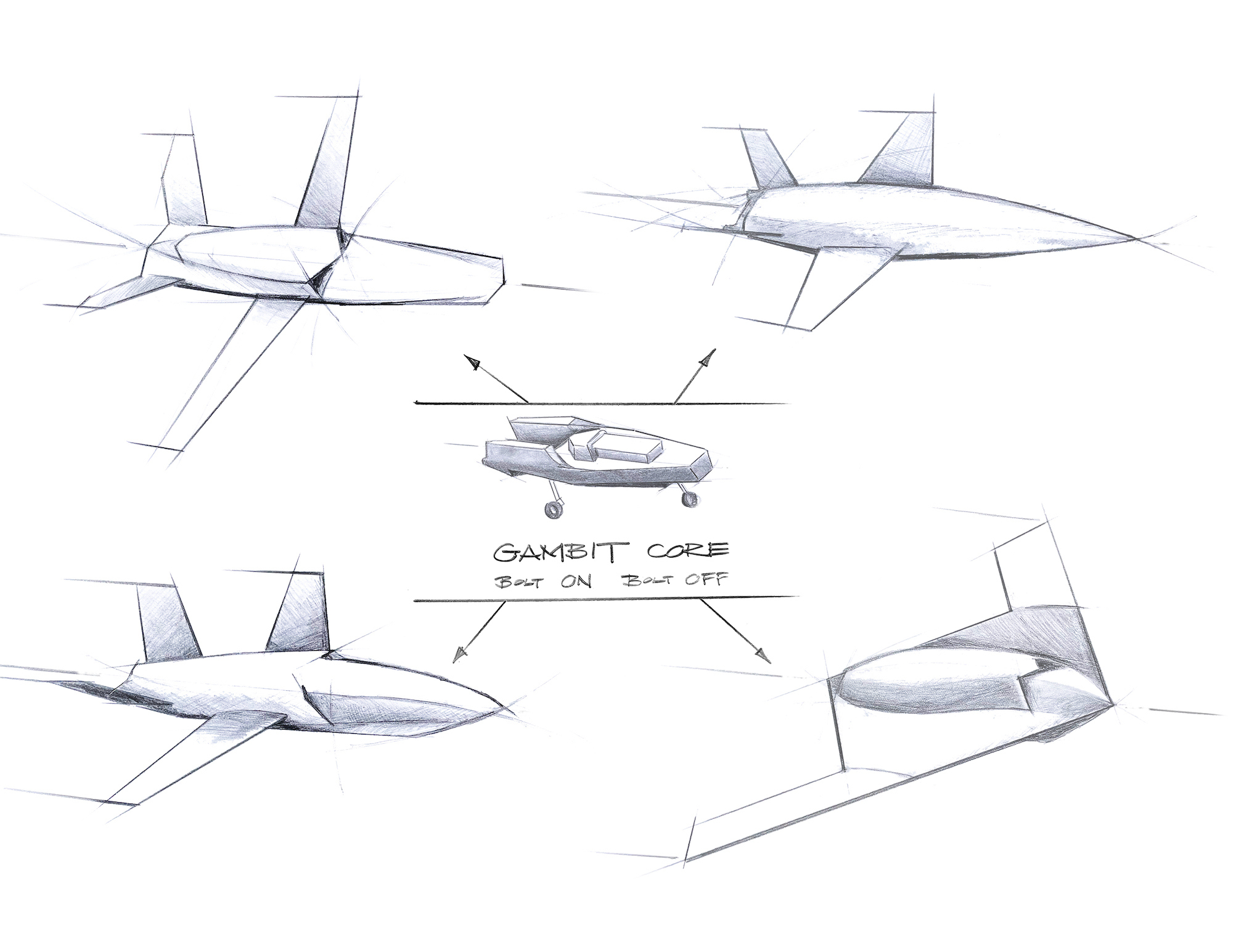

On September 19, defense giant General Atomics unveiled four related drone concepts, all under the family name of Gambit. The program, which was first announced in March, aims to take advantage of the possibilities afforded to uncrewed design, allowing several distinct aircraft to be built around a single core. Drones based on the Gambit Core would then join fighter wings and missions, under the direction of human pilots in F-35s or newer fighters, all working towards the same end.
The heart of the Gambit, as General Atomics says, is a “core platform that encapsulates a single set of common hardware: landing gear, baseline avionics, chassis, and other essential functions. A common Gambit Core accounts for roughly 70 percent of the price among the various models, providing an economy of scale to help lower costs, increase interoperability, and enhance or accelerate the development of variants.”
General Atomics, in its announcement, explicitly compares this to the assembly line style of automotive manufacture, in which both luxury sedans and family economy models start from the same base and then deviate only later in production. Gambit is pitched explicitly as a suite of useful drones, which will offer four useful versions and come in a line that can be expanded as production evolves.

Common core for four
The four initial Gambit models, as pitched, come complete with sketchpad-style illustrations. General Atomics announced them as each having a number, and each one is also intended to have a specific focus. Together, they will allow the military to use drones for everything from scouting to combat to advanced training to stealth missions.

Gambit 1
This is a scout and surveillance drone. This scout Gambit will take the core package and add “high aspect wings and a fuel-optimized engine,” letting it “spend more time patrolling a given box of airspace to provide early warning or surveillance.” This is the role most familiar to the pattern of drones like the Reaper or Global Hawk, made by General Atomics and Northrop Grumman respectively, though as described the scout Gambit is intended to watch for enemy planes, in addition to any watching movements below on the ground.

Gambit 2
This is an air-to-air fighter. This fighter drone will have less endurance than the long range scout. Instead, it will fight in packs, with sensors shared between multiple fighter-Gambits, all using shared signals to triangulate and find even stealthy targets. General Atomics says that this group could do multiple tasks: “They could alert human-piloted fighters farther away with a burst transmission. They could wave off to keep clear of the hostile fighter. They could attack with their own weapons using AI and machine learning to harass and trap the hostile fighter.” This theoretically lets drone aircraft be on the bleeding edge of a fight, with commanding human supervisors able to respond after the drones have already detected a hostile enemy.

Gambit 3
This aircraft is a training tool, a drone that will be able to emulate the powerful sensors of a modern crewed stealth fighter and pretend to be something it’s not, all without requiring actual pilots to fly training missions and masquerade as enemies. Training work is important and time-intensive, and the Air Force is already invested in using AI to evaluate pilots and pilot technique. Tools that are especially effective at training, like the Angry Kitten electronic warfare suite, can end up adapted to frontline service.

Gambit 4
Last but not least, this model is “a combat reconnaissance-focused model with no tail and swept wings,” which in the sketch resembles the flying wing B-2 bomber or the uncrewed RQ-170 drone. The General Atomics release for this drone is the least descriptive, offering only that the stealth Gambit is “optimized for long-endurance missions of a specialized nature, leveraging low-observable elements and other advanced systems for avoiding enemy detection.” As the B-2 and RQ-170 indicate, that kind of stealth is useful for bombing targets despite the presence of air defenses, or for surveillance in areas where another plane would risk getting shot down or being detected.
Teaming with possibilities
When General Atomics president David Alexander announced Gambit in March, he said that “Gambit will usher in a new era, where UAS [uncrewed aircraft systems] work collaboratively with manned aircraft to detect, identify and target adversaries at range and scale across the battlespace.”
The drone family is designed to work with and around existing and new crewed aircraft, letting autonomy take over many of the tasks presently done by remote pilots. Instead of multiple analysts gathering around a video feed from a drone while a remote crew steers it and directs sensors, the Gambit family is envisioned as self-sufficient but under human direction. That allows the fighter pilots in the sky to focus on missions, like clearing out anti-air missiles or intercepting enemy jets, without devoting their full energy and mental capacity to shepherding drones.
With programs like the Loyal Wingman, the Air Force has already indicated an interest in drone escorts for future fighters, and has worked with multiple contractors on designs that meet this need. Gambit, at a minimum, suggests that the defense industry is interested in providing whole families of potential drone escorts.
